
Future architects have sparked interest
As part of the exhibition events organized by Xella Porobeton CZ s.r.o. on the occasion of its participation in the 11th International Building Fair in Brno, a ceremonial presentation of the winning works of the 11th nationwide and 3rd international edition of the Xella Student Contest 2005/6 also took place.
The theme of this year's edition was “The Right Bank Protective Dike of the Gabčíkovo Waterworks through the Eyes of Architecture Students” and the contestants designed service facilities for sports and recreational purposes along the protective dike of the Gabčíkovo Waterworks. Their goal was primarily to demonstrate the possibilities of sensitive and interesting architectural enhancement of the landscape altered by human activity.
During the ceremonial presentation, mainly the authors of several winning works took the stage, such as the winner of this year's edition Michal Krištof and Leona Hobausová, who won second place. The interest of the audience was also sparked by the presentations of some jury members, particularly the prominent architect Vlad Milunič, two winners from previous years, and other personalities. Visitors could view the awarded and winning works on panels in the hall, appreciating in some cases the truly unconventional approaches of future young architects to the assigned task.
Michal Krištof, a student at the Faculty of Architecture at the Brno University of Technology, became this year's winner of the architectural competition organized by Xella Porobeton CZ s.r.o. Despite not being an experienced veteran, but merely a first-year student, he coped best with the assigned task among all the contestants, and his proposal rightfully won against 45 other competitive projects.
To learn a little more about him, we asked him a few questions.
What did you expect when you applied for the Xella student contest? Did it meet your expectations?
I did not apply for the Xella contest with the aim of winning, nor did I have high expectations. I worked on the project because I wanted to leave some mark after my first semester at the Faculty of Architecture. And because we had not yet worked in studios in the first year, this competition was what I was looking for - and it was also a big challenge.
It was not only because I was a newcomer but also because I did not know what I was getting into. While my older colleagues worked on this competition the entire semester as part of their studio courses, I did it during the exam period. Moreover, I had to learn to work with architectural programs as quickly as possible. In short, there were many challenges, compounded by an illness, but in the end, I managed it, and the result was truly a wonderful recognition of my effort. Given that it was my first competition, the result exceeded all my expectations. When a first-year student enters a competition, I think one never expects such success.
Do you have any professional dream ahead of you - not a goal, but a true dream or desire?
I have one human desire, and that is to be a good person. From that stem all others, including the professional one. I never fly in the clouds, but keep my feet on the ground. It comes from my nature; I am a realist, and rather than set overly high goals, I prefer smaller, achievable ones. I don't look too far into the future because I never know what may happen tomorrow. There are many examples around. Of course, like everyone, I have my dreams, and sometimes I wish that all my rationality and reality would fall away - something similar to what Le Corbusier experienced with his chapel in Ronchamp. Maybe somewhere there is also my great desire to create beautiful spaces for people's lives. Spaces of the future, spaces shaped not only by walls but also by music, computers. Those are my most creative dreams. Then I find myself back on the ground wishing to work with some quality architect, later to establish my own studio and try to realize at least one dream, even if only partially. Leaving my mark on this world. That is one of my greatest desires.
What do you see as the main advantages of YTONG aerated concrete and how do you think you could use them in your career, in your projects?
During my short studies, I have already become familiar with the YTONG building system. I consider aerated concrete to be a very interesting material for buildings typologically belonging to residential buildings, family houses, and similar structures. This system has its advantages, which I would utilize mainly with respect to my architectural specifications. It's always about solving some problem, and this solution consists of concept, function, form, material, construction... If there is an opportunity to use aerated concrete in all of those, it will certainly play its role.
Jarek Veselák, now an architect, won several years ago in the traditional student architectural competition focused on the practical use of aerated concrete. The 5th edition of the competition, which took place in 1999/2000, had the theme: A House for a Personality Using the Hebel Building System. Today, the former student works in his own studio Aeroplan and views his participation in the student competition from a different perspective, that of practice.
What expectations did you have when you applied to the student architectural competition years ago? Did any of them come true?
I applied for the competition that at the time was still named after the company Hebel, and I am glad that despite several name changes, the company has not altered its stance towards organizing the competition for students and has maintained the tradition.
To be honest, I did not have high expectations - nor did I want to. High expectations are often followed by equally great disappointment. And it is certainly safer when designing, because in architecture the path from the first idea to the design through the competition, its evaluation, to potential realization is very long. Living with such expectations for so long is somewhat uncomfortable...
Maybe I would therefore prefer to speak about hope - that one manages to make a proposal of which one is internally convinced, and that what delights the author will be seen and appreciated by someone else. That hope has been fulfilled for me.
Do you have any professional dream ahead of you - not a goal, but a true dream or desire?
I certainly do. And not just one. A professional dream could be a cultured state of society. Cultured enough that creative acts - not only in the field of architecture - become a regular part of everyday life, drawing attention to it and making visible the reality that life is, by its nature, not self-evident... So that they constantly remind that the content of life can easily be the sale of blocks, projects, or houses, but it should not become its meaning.
What do you see as the main advantages of Ytong aerated concrete and how do you think you could use them in your work?
As an advantage, I would see, for example, the fact that it is a material sufficiently known to builders who are not afraid to work with it and appreciate its ease of processability. Aerated concrete is perceived as a nearly traditional material in these regions, which stands out even more in connection with the fact that such awareness is still lacking, for example, in wooden constructions.
The theme of this year's edition was “The Right Bank Protective Dike of the Gabčíkovo Waterworks through the Eyes of Architecture Students” and the contestants designed service facilities for sports and recreational purposes along the protective dike of the Gabčíkovo Waterworks. Their goal was primarily to demonstrate the possibilities of sensitive and interesting architectural enhancement of the landscape altered by human activity.
During the ceremonial presentation, mainly the authors of several winning works took the stage, such as the winner of this year's edition Michal Krištof and Leona Hobausová, who won second place. The interest of the audience was also sparked by the presentations of some jury members, particularly the prominent architect Vlad Milunič, two winners from previous years, and other personalities. Visitors could view the awarded and winning works on panels in the hall, appreciating in some cases the truly unconventional approaches of future young architects to the assigned task.
Interview with Michal Krištof, the winner of this year's 11th edition of the Xella Student Contest 2005/6
Michal Krištof, a student at the Faculty of Architecture at the Brno University of Technology, became this year's winner of the architectural competition organized by Xella Porobeton CZ s.r.o. Despite not being an experienced veteran, but merely a first-year student, he coped best with the assigned task among all the contestants, and his proposal rightfully won against 45 other competitive projects.
To learn a little more about him, we asked him a few questions.
What did you expect when you applied for the Xella student contest? Did it meet your expectations?
I did not apply for the Xella contest with the aim of winning, nor did I have high expectations. I worked on the project because I wanted to leave some mark after my first semester at the Faculty of Architecture. And because we had not yet worked in studios in the first year, this competition was what I was looking for - and it was also a big challenge.
It was not only because I was a newcomer but also because I did not know what I was getting into. While my older colleagues worked on this competition the entire semester as part of their studio courses, I did it during the exam period. Moreover, I had to learn to work with architectural programs as quickly as possible. In short, there were many challenges, compounded by an illness, but in the end, I managed it, and the result was truly a wonderful recognition of my effort. Given that it was my first competition, the result exceeded all my expectations. When a first-year student enters a competition, I think one never expects such success.
Do you have any professional dream ahead of you - not a goal, but a true dream or desire?
I have one human desire, and that is to be a good person. From that stem all others, including the professional one. I never fly in the clouds, but keep my feet on the ground. It comes from my nature; I am a realist, and rather than set overly high goals, I prefer smaller, achievable ones. I don't look too far into the future because I never know what may happen tomorrow. There are many examples around. Of course, like everyone, I have my dreams, and sometimes I wish that all my rationality and reality would fall away - something similar to what Le Corbusier experienced with his chapel in Ronchamp. Maybe somewhere there is also my great desire to create beautiful spaces for people's lives. Spaces of the future, spaces shaped not only by walls but also by music, computers. Those are my most creative dreams. Then I find myself back on the ground wishing to work with some quality architect, later to establish my own studio and try to realize at least one dream, even if only partially. Leaving my mark on this world. That is one of my greatest desires.
What do you see as the main advantages of YTONG aerated concrete and how do you think you could use them in your career, in your projects?
During my short studies, I have already become familiar with the YTONG building system. I consider aerated concrete to be a very interesting material for buildings typologically belonging to residential buildings, family houses, and similar structures. This system has its advantages, which I would utilize mainly with respect to my architectural specifications. It's always about solving some problem, and this solution consists of concept, function, form, material, construction... If there is an opportunity to use aerated concrete in all of those, it will certainly play its role.
Interview with ing. arch. Jarek Veselák, winner of the 5th edition of the student competition
Jarek Veselák, now an architect, won several years ago in the traditional student architectural competition focused on the practical use of aerated concrete. The 5th edition of the competition, which took place in 1999/2000, had the theme: A House for a Personality Using the Hebel Building System. Today, the former student works in his own studio Aeroplan and views his participation in the student competition from a different perspective, that of practice.
What expectations did you have when you applied to the student architectural competition years ago? Did any of them come true?
I applied for the competition that at the time was still named after the company Hebel, and I am glad that despite several name changes, the company has not altered its stance towards organizing the competition for students and has maintained the tradition.
To be honest, I did not have high expectations - nor did I want to. High expectations are often followed by equally great disappointment. And it is certainly safer when designing, because in architecture the path from the first idea to the design through the competition, its evaluation, to potential realization is very long. Living with such expectations for so long is somewhat uncomfortable...
Maybe I would therefore prefer to speak about hope - that one manages to make a proposal of which one is internally convinced, and that what delights the author will be seen and appreciated by someone else. That hope has been fulfilled for me.
Do you have any professional dream ahead of you - not a goal, but a true dream or desire?
I certainly do. And not just one. A professional dream could be a cultured state of society. Cultured enough that creative acts - not only in the field of architecture - become a regular part of everyday life, drawing attention to it and making visible the reality that life is, by its nature, not self-evident... So that they constantly remind that the content of life can easily be the sale of blocks, projects, or houses, but it should not become its meaning.
What do you see as the main advantages of Ytong aerated concrete and how do you think you could use them in your work?
As an advantage, I would see, for example, the fact that it is a material sufficiently known to builders who are not afraid to work with it and appreciate its ease of processability. Aerated concrete is perceived as a nearly traditional material in these regions, which stands out even more in connection with the fact that such awareness is still lacking, for example, in wooden constructions.
The English translation is powered by AI tool. Switch to Czech to view the original text source.
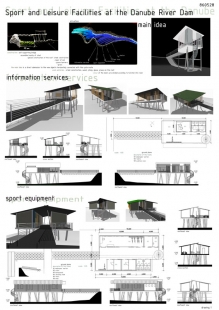
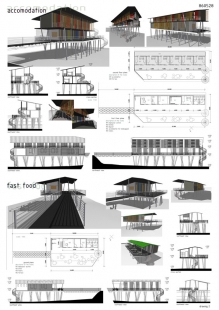
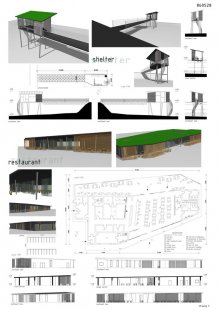
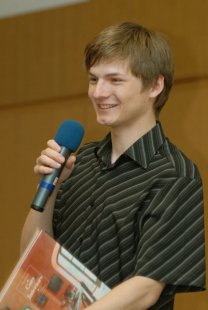
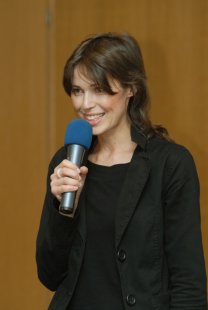
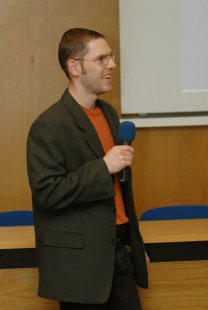
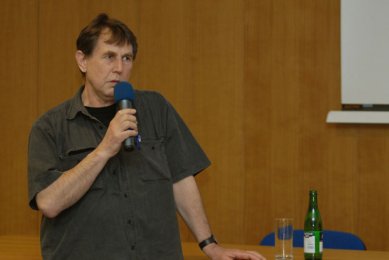
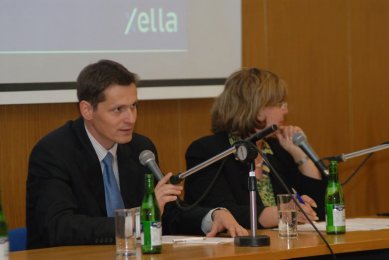
0 comments
add comment











